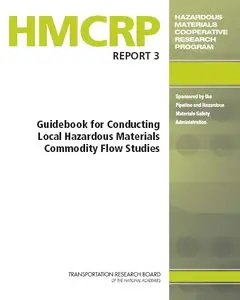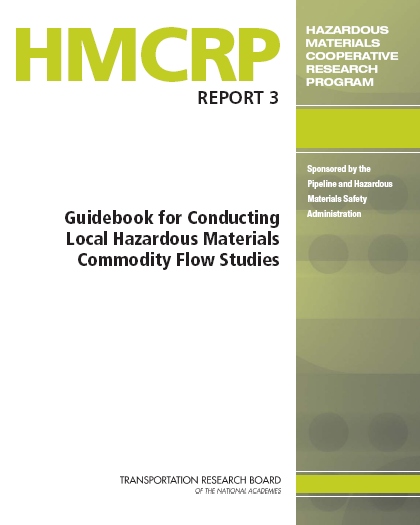"Guidebook for Conducting Local Hazardous Materials Commodity Flow Studies" by David H. Bierling, George O. Rogers, Deborah L. Jasek, Anna A. Protopapas, Jeffrey E. Warner, Leslie E. Olson
Hazardous Materials Cooperative Research Program Project HM-01, HMCRP Report 3
TRB, NAS Press | 2011 | ISBN: 9780309155601 | 184 pages | PDF | 5 MB
Hazardous Materials Cooperative Research Program Project HM-01, HMCRP Report 3
TRB, NAS Press | 2011 | ISBN: 9780309155601 | 184 pages | PDF | 5 MB
TRB’s HMCRP Report 3: Guidebook for Conducting Local Hazardous Materials Commodity Flow Studies is designed to support risk assessment, emergency response preparedness, resource allocation, and analyses of hazardous commodity flows across jurisdictions. This report presents a user-friendly guidebook to support risk assessment, emergency response preparedness, resource allocation, and analyses of hazardous commodity flows across jurisdictions.
The guidebook updates the U.S. Department of Transportation’s Guidance for Conducting Hazardous Materials Flow Surveys. All modes of transportation, all classes and divisions of hazardous materials, and the effects of seasonality on hazardous materials movements are discussed in the guidebook.
Contents
1 Summary
10 Chapter 1 Introduction
10 1.1 Need for Document
12 1.2 Hazmat Transportation Overview
15 1.3 Organization of this Report
17 Chapter 2 Select Leadership, Set Objectives, and Define Data Requirements
17 2.1 Select Leadership
19 2.2 Set Objectives
22 2.3 Define Data Requirements
23 2.4 HMCFS Objectives and Public Protection Goals
24 Chapter 3 Collect and Review Baseline Information
and Scope Project
24 3.1 Collect Baseline Information
26 3.2 Review and Evaluate Baseline Information
28 3.3 Scope the HMCFS Project
30 Chapter 4 Collect and Review Existing Data
30 4.1 Existing Data Overview
30 4.2 Locally or Institutionally Available Data Sources
36 4.3 Electronic Databases and Reports
41 4.4 Review Existing Data and New Data Needs
43 Chapter 5 Collect and Validate New Data
43 5.1 Conduct Interviews
45 5.2 Considerations for Field Data Collection
50 5.3 Collect Field Data
55 5.4 Validate New Data
57 Chapter 6 Analyze and Document Data
57 6.1 Railway, Pipeline, Waterway, and Airway Data Analysis
59 6.2 Truck/Roadway Data Analysis
59 6.3 Document the Data
66 6.4 Summarize Information
67 6.5 HMCFS Content
69 Chapter 7 Implement Information
69 7.1 Review Objectives and Limitations
69 7.2 Disseminate and Communicate Information
72 7.3 Apply Results
74 7.4 Archiving the HMCFS
74 7.5 Revisions and Updates
75 Chapter 8 Conclusions and Recommendations
77 References
79 Key Terms and Acronyms
A-1 Appendix A Hazardous Materials Placards
B-1 Appendix B Shipping Documents and Placard Numbers from 2008 ERG
C-1 Appendix C HMCFS Case Studies
D-1 Appendix D Promising Practices for Conducting an HMCFS
E-1 Appendix E HMCFS Sampling and Scheduling
F-1 Appendix F Sample Railroad Data Request Form
G-1 Appendix G Electronic Database and Report Descriptions
H-1 Appendix H 2002 Vehicle Inventory and Use Survey Data
I-1 Appendix I Large Truck Incident and Accident Information
J-1 Appendix J Truck/Hazmat Placard Identification Sheet and Count Tabulation Sheets
K-1 Appendix K Existing and New HMCFS Data Analysis Examples
with TOC BookMarkLinks
More : You find here



